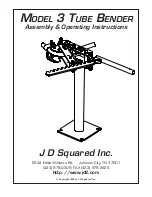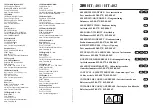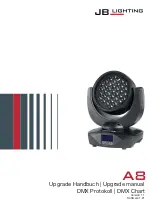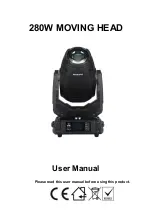
page 2 of 2
32000855, revision I
(Order in which to tighten screws)
8
7
6
5
4
3
2
1
Figure 2
EXCAVATION
Excavate soil for housing placement and conduit runs. Contour the hole to the shape of the ballast box,
allowing 3" min. around and under the box for the placement of granular material. It is recommended that the
boxes not be placed in low locations where water could accumulate and stand for long periods of time.
DRAINAGE
Ballast housing should be surrounded by a 3" minimum layer of gravel or sand to insure proper drainage. For
concrete pour installations, box is to be placed on a 4" minimum bed of gravel with soil below. Use CP4 accessory
kit when installing fixture in concrete. When backfilling, housing flange should be just above ground level as shown
in the illustration. Hilling up earth around boxes will promote good water run-off and prevent debris accumulation.
WIRING
1. Always be sure to turn power OFF when installing or servicing a ballast box.
2. Using a liquid tight connector (not inlcuded) in the threaded hole in the bottom of the box, connect supply
wires to ballast box wires. Use wire nuts (not included) to connect black supply wire to black wire from box
labeled "120V". Connect white supply wire to white wire from box labeled "COM". Connect supply ground wire
to green ground wire from box labeled "GRD".
3. For remote mounted fixtures, use a liquid tight connector (not included) in one of the plugged holes in the
bottom of the box. Connect black fixture wire to black wire from box labeled "LMP HOT". Connect white fixture
wire to white wire from box labeled "LMP COM".
4. For mounting a fixture directly to box, consult factory. Lids must be machined in the factory by Philips to ensure
proper sealing.
5. After wiring is complete, turn power ON.
CAUTION!
1. Ballast housing should not be installed in insulating materials such as bark, vermiculite, etc. for the full depth of
the housing. However, surface use of these materials is acceptable. DO NOT cover the lid of the housing with
any of these materials.
2. The conduit entries inside the box must be potted. (See drawing on opposite page.) Use HADCO two part
epoxy # MA1 (included) or equivalent.
3. All gasket seating surfaces must be clean and free of debris before attempting to replace the lid. If debris in
the screw holes prevents proper seating of gasket, holes must be blown clear or cleared with a # 10-24 tap.
Insert screws through lid and into housing and tighten using an alternating torque sequence 20 to 30 inch-lbs.
See Figure 2 below.
4. Regularly check lid and keep it cleared of debris (mulch, leaves, etc.) as this could cause a fire.





















